Class - Reptilia
Reptiles are a class of cold-blooded vertebrates - their body temperature varies with their environment. Reptiles include snakes, lizards, crocodiles, and turtles.
Reptiles have scaly skin, breathe air with lungs, and have a three-chambered heart.
Most reptiles lay eggs, although some produce eggs that hatch internally.
Order - Testudines
This order includes all turtles and tortoises. It is divided into 3 suborders: Pleurodira (side-necked turtles), Cryptodira (freshwater turtles, snapping turtles, tortoises, soft-shelled turtles, and sea turtles), and Amphichelydia (a suborder of turtles that is now extinct).
Suborder - Cryptodira
This suborder includes sea turtles, freshwater turtles, snapping turtles, tortoises, and soft-shelled turtles.
Families
Most scientists recognize 2 families of sea turtles:
- Family Cheloniidae includes all sea turtles with scutes (horny plates) covering their shells.
- Family Dermochelyidae are scute-less turtles with only 1 modern species; the leatherback turtle. A leatherback sea turtle is covered with leathery skin. It is the only marine turtle whose backbone is not attached to the inside of its shell.
Genus, species
Most scientists recognize 7 species and 1 subspecies of sea turtles:


Some scientists recognize 2 subspecies of green sea turtle: the green (Chelonia mydas mydas) and the black or Eastern Pacific green turtle (Chelonia mydas agassizii).

loggerhead (Caretta caretta)
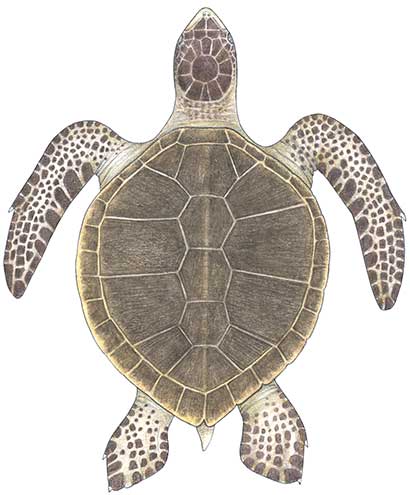
Kemp's ridley (Lepidochelys kempii)
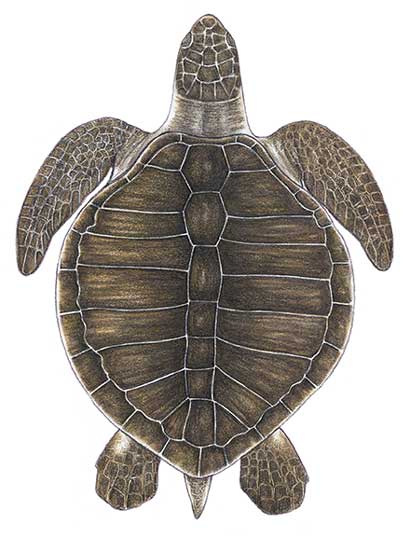
olive ridley (Lepidochelys olivacea)
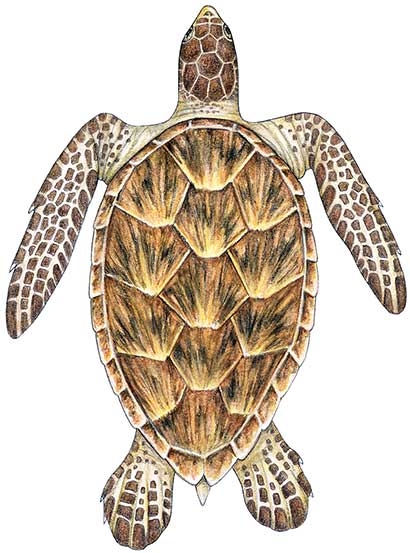
hawksbill (Eretmochelys imbricate)
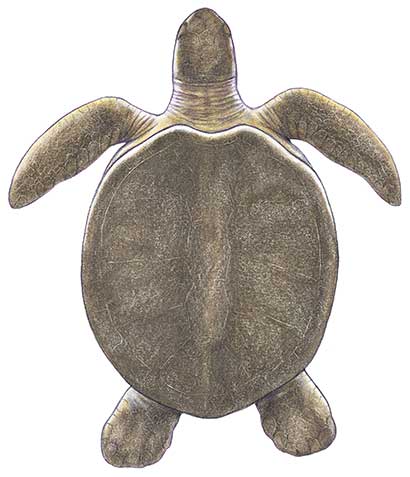
flatback (Natator depressus)
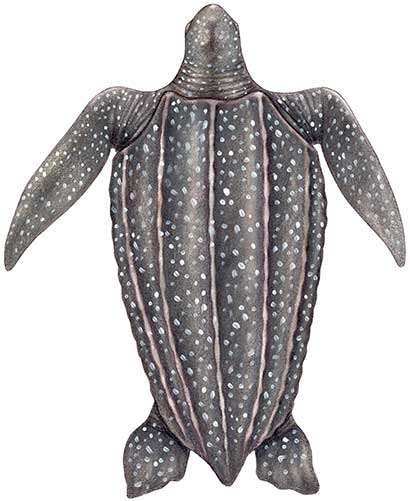
leatherback (Dermochelys coriacea)
Fossil Record
The first turtles appeared during the Triassic period, 245 to 209 million years ago.
The earliest known sea turtles appear in the fossil record in the Early Cretaceous period, about 110 million years ago. Scientists believe that modern sea turtles are derived from marsh-inhabiting ancestors that lived during the Late Triassic period.
Fossil records show that the now-extinct sea turtle Archelon ischyros, which lived 75 to 65 million years ago, was one of the largest turtles that ever lived. It reached a length of 4.6 m (15 ft.) and weighed more than 2,700 kg (6,000 lbs.).
Together with saltwater crocodiles, sea snakes, and marine iguanas, sea turtles are the only surviving seawater-adapted reptiles.



